Abstract
1. The binocular co-ordination of human vertical saccades was analysed systematically over the full oculomotor range, with a precise and accurate scleral sensor coil technique. Effects of amplitude (1.25-70 deg), direction (upward vs. downward and centripetal vs. centrifugal), as well as position (upper or lower sector of vertical oculomotor range), were investigated systematically in three subjects. 2. All saccades were made voluntarily between continuously presented pairs of targets, which subtended equal angles of target vergence. 3. Vertical saccades were less accurate than horizontal saccades (as described by Collewijn, Erkelens & Steinman, 1988). For target distances between 10 and 70 deg, upward saccades undershot the target by about 10%, whereas downward saccades tended to overshoot the target. Downward saccades were about 1.5 deg larger than upward saccades between the same targets. 4. Peak velocities continued to increase monotonically with saccadic amplitude up to 513 +/- 27 (S.D.) deg/s for 70 deg saccades; a distinct asymptotic level was not reached. 5. Velocity profiles of upward and downward saccades, made symmetrically about the primary (straight-ahead) position, were very similar for amplitudes up to 30 deg. At larger amplitudes, velocity profiles of upward saccades remained single peaked, whereas those of downward saccades invariably developed a second velocity peak. 6. Parameters of upward saccades depended heavily on the position of the eye. In the upper oculomotor range such saccades had lower maximum speeds, longer durations, and were more skewed than similar saccades in the lower oculomotor range (below primary). Downward saccades were almost independent of eye position. 7. Vertical eye movements during vertical saccades were virtually identical in the two eyes. In contrast, disjunctive horizontal components were systematically present. Upward saccades, at all amplitudes, were associated with diverging eye movements. Converging eye movements occurred during downward saccades. These systematic effects suggest that the vergence subsystem is not turned off during saccades. 8. These changes in vergence were followed by converging horizontal post-saccadic drift after upward saccades, and in diverging horizontal drift after downward saccades.(ABSTRACT TRUNCATED AT 400 WORDS)
Full text
PDF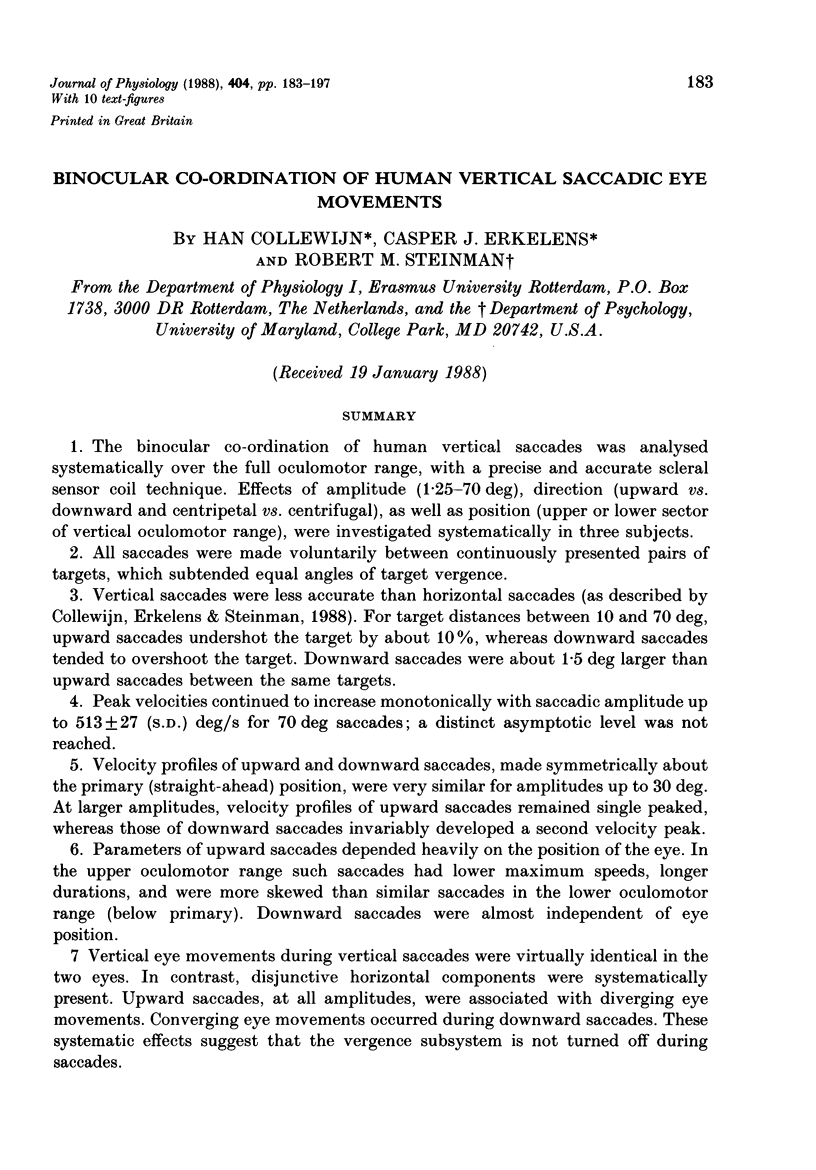
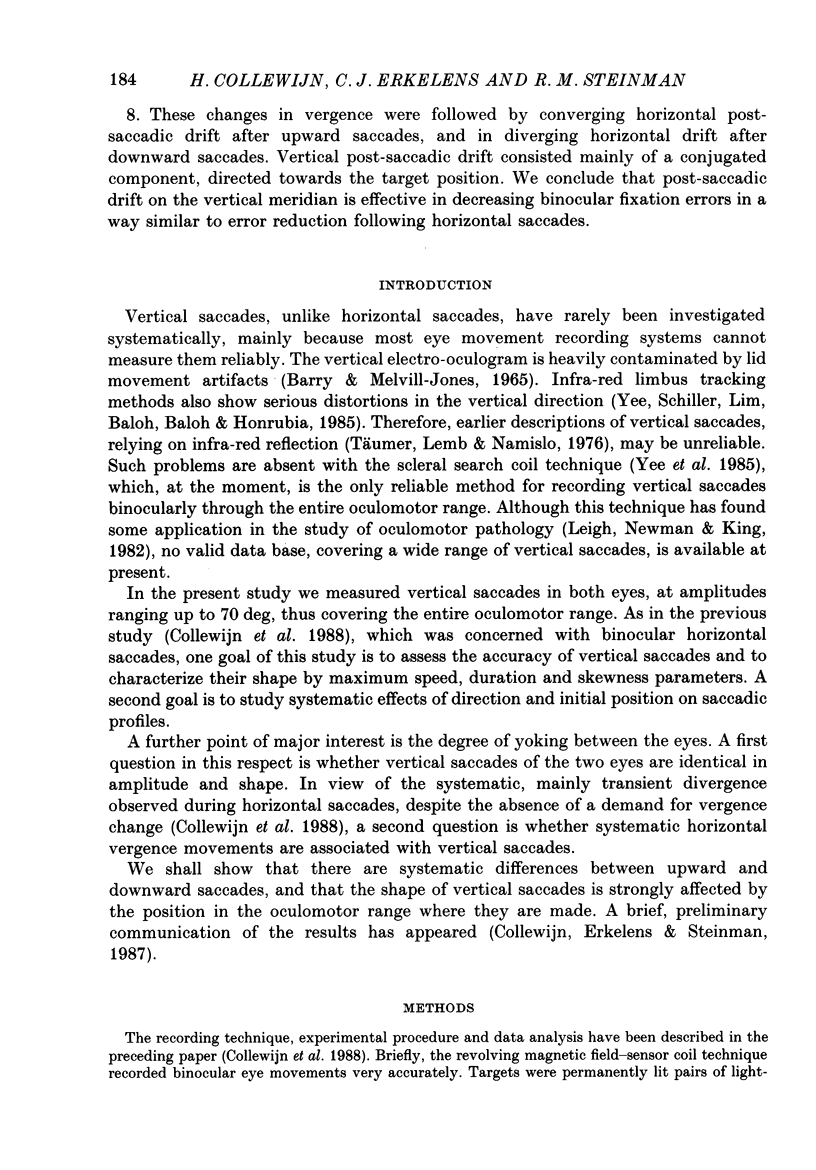
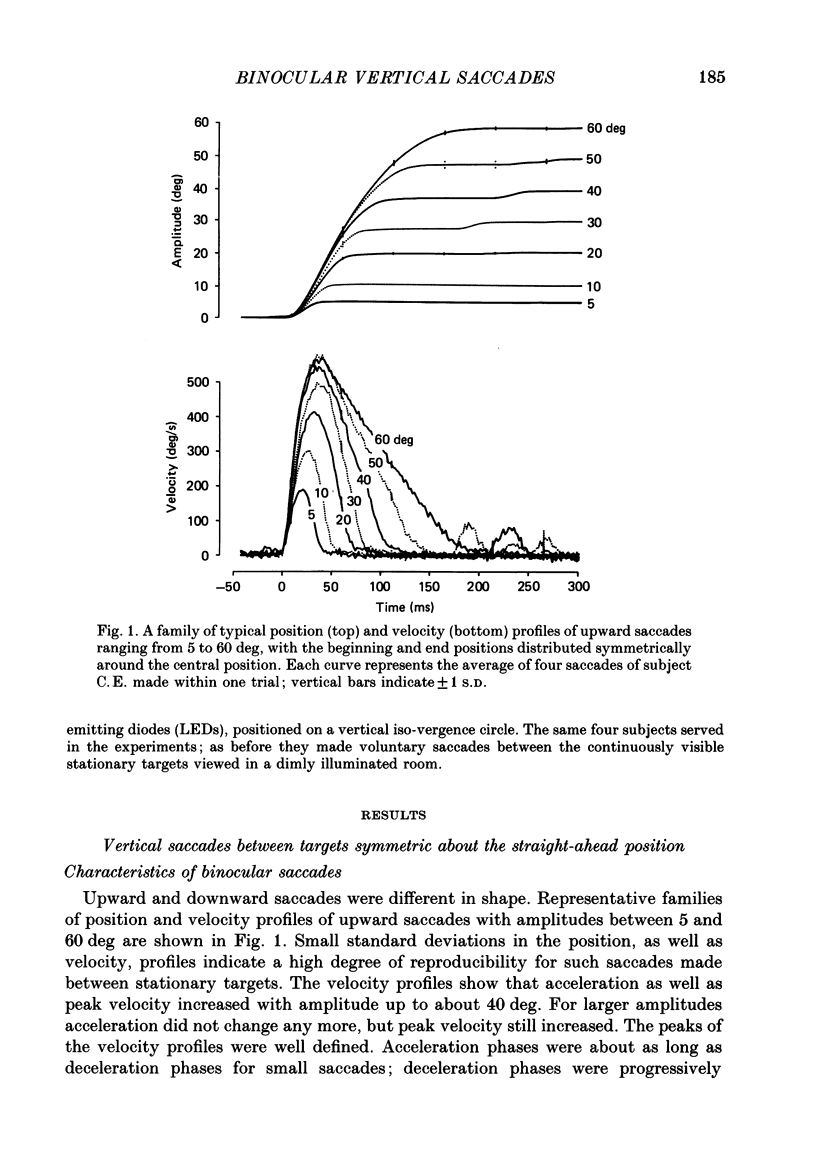

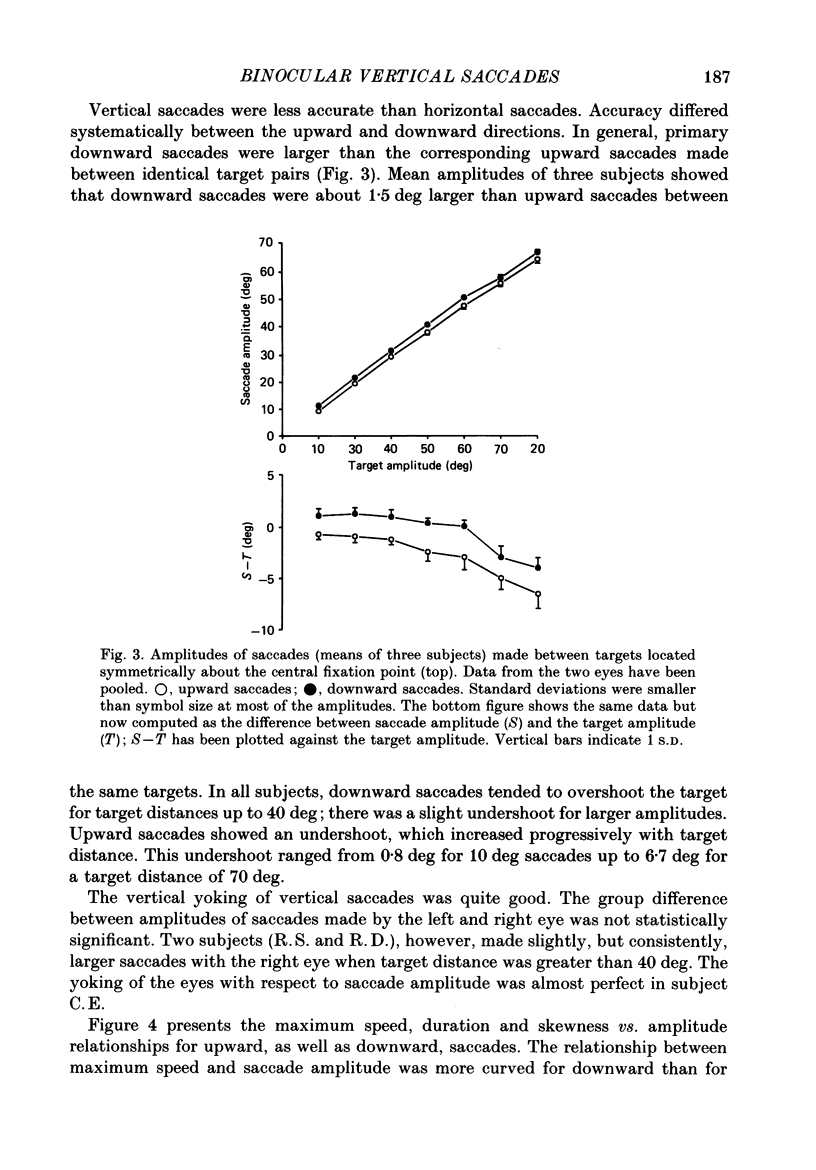
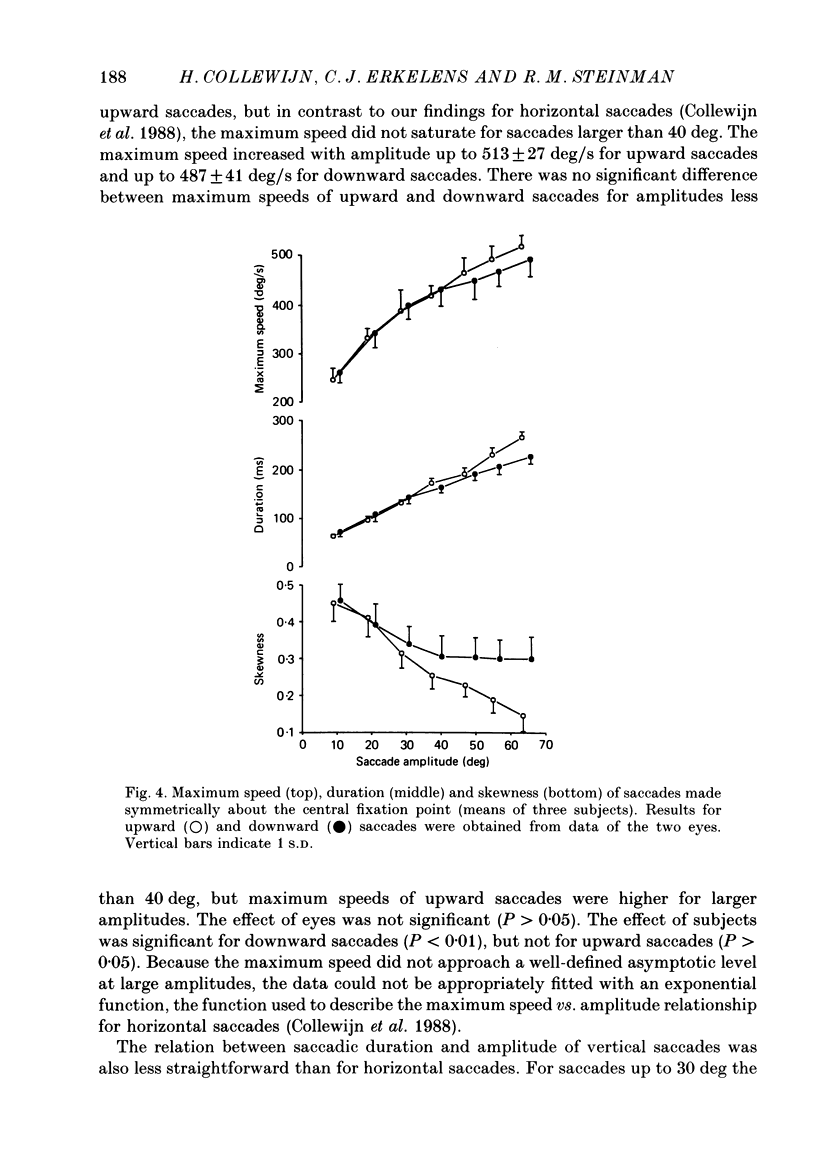
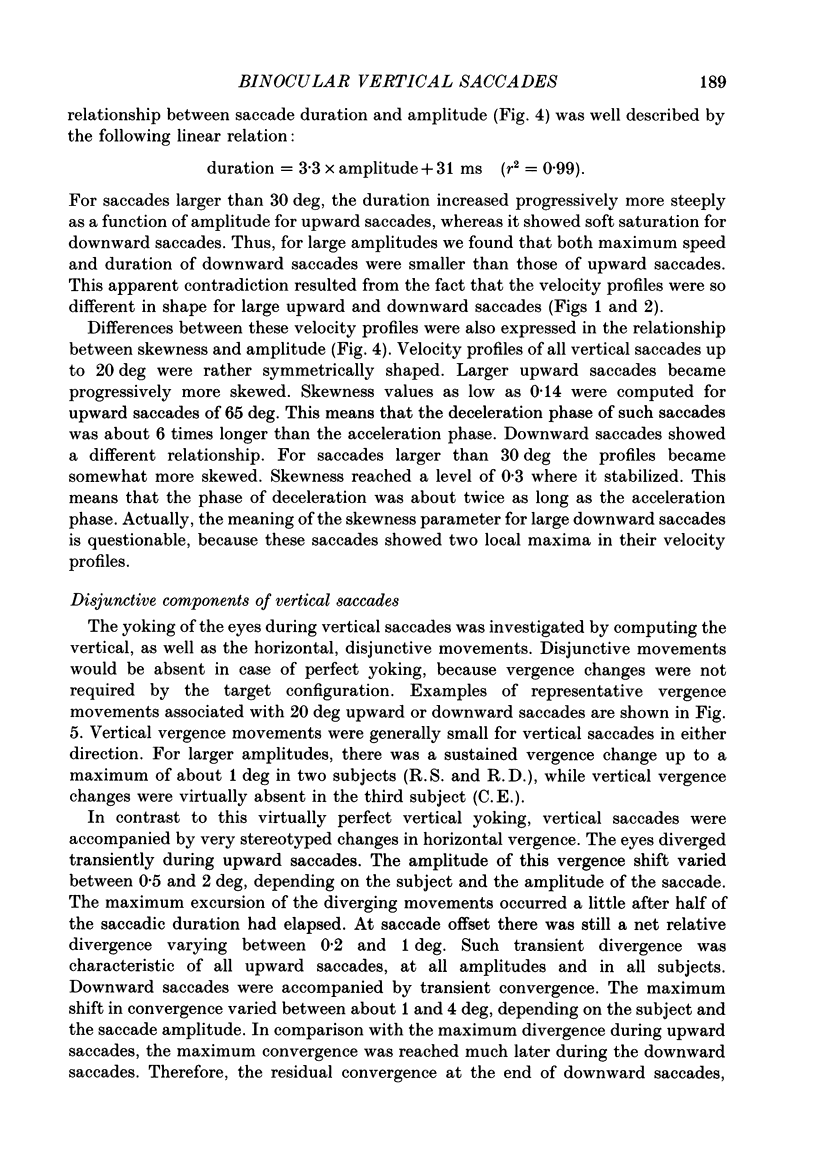
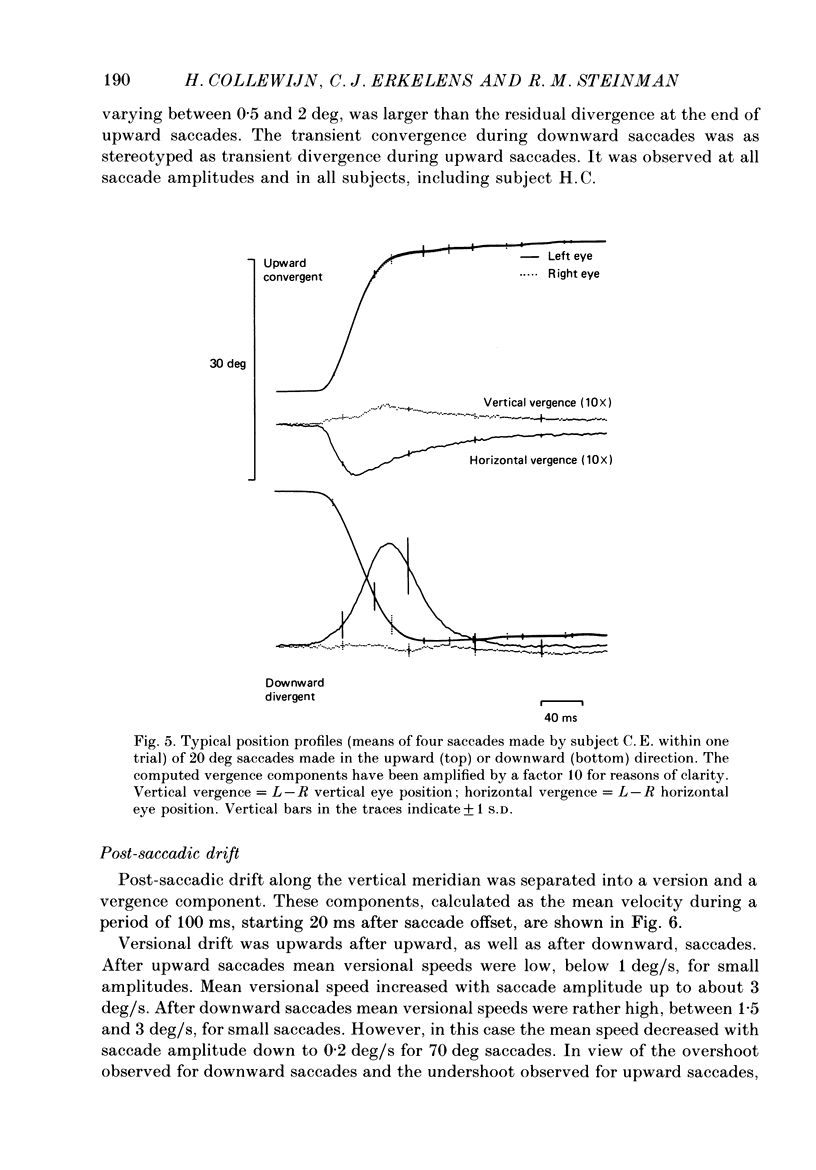
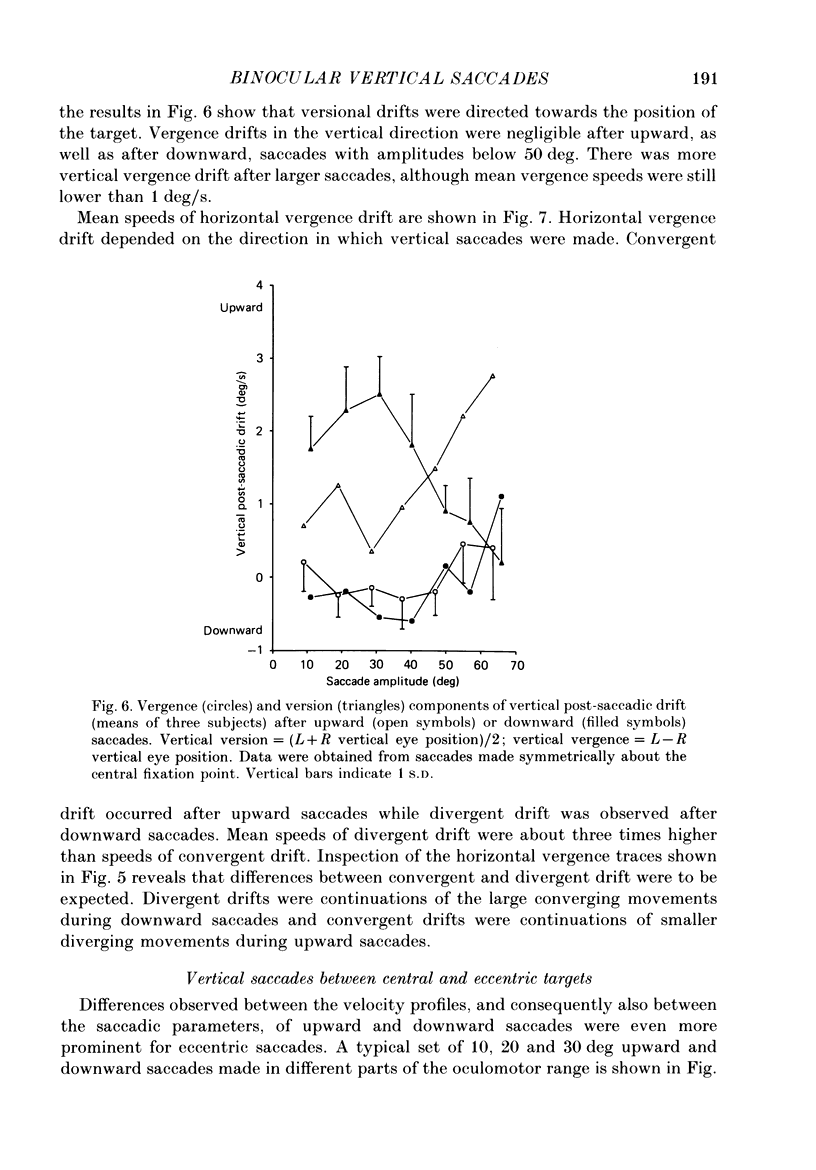
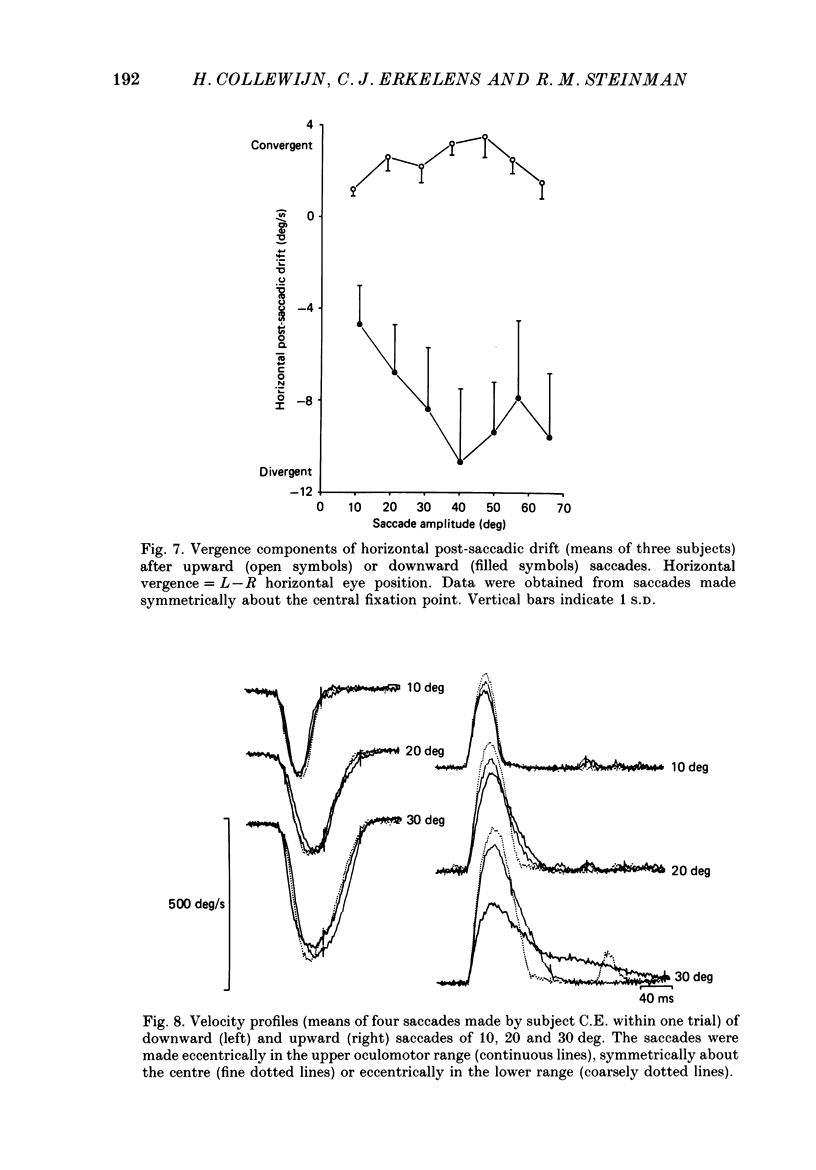

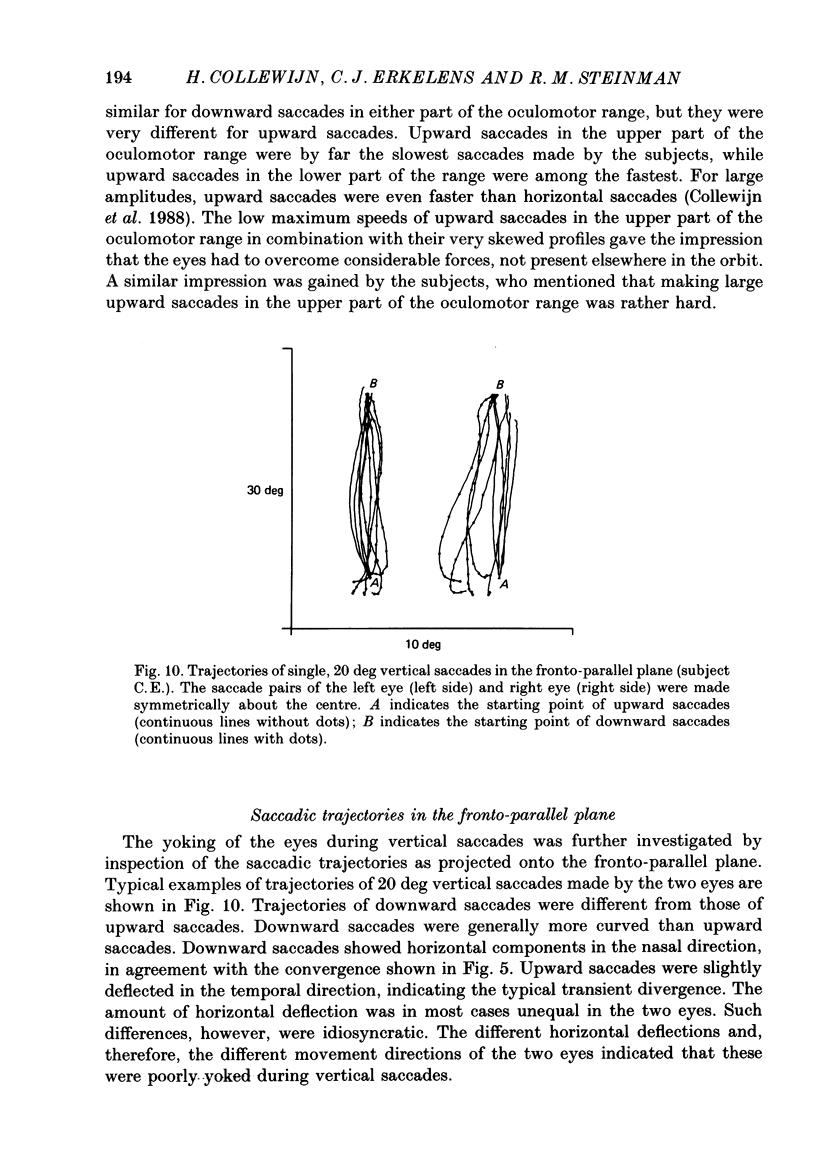

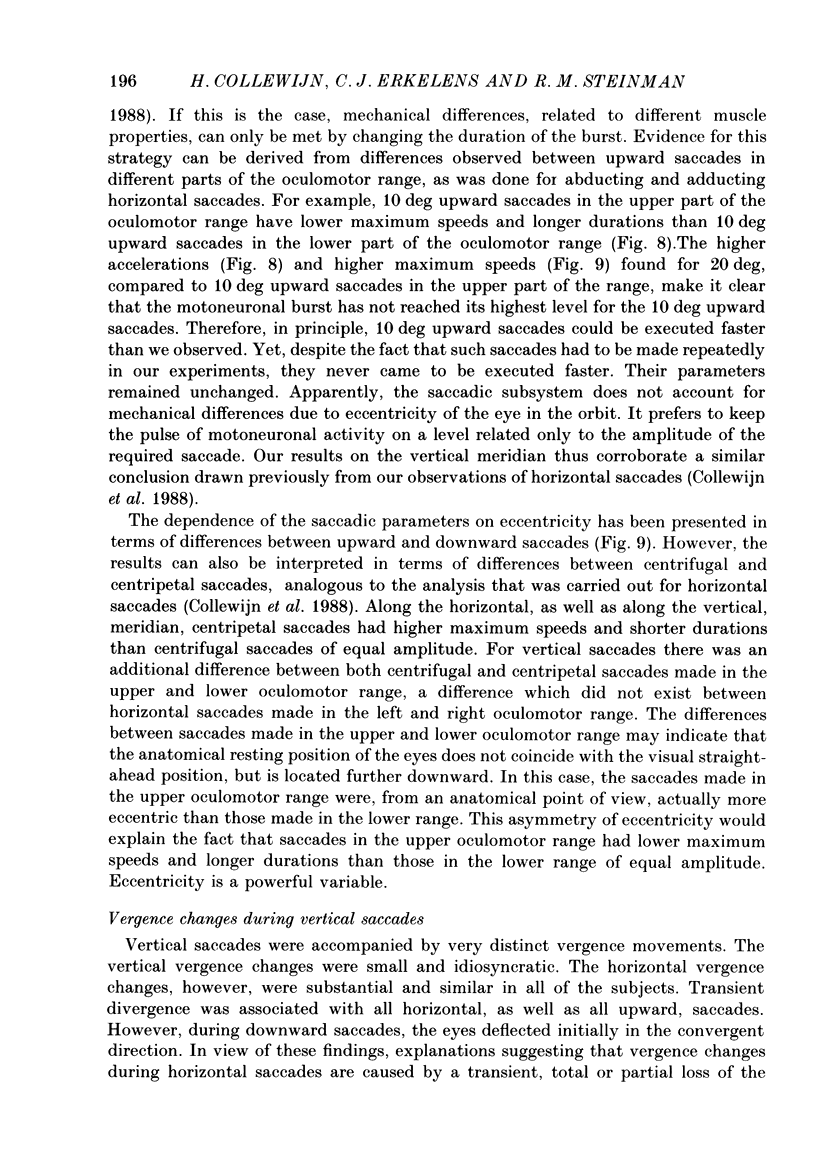

Selected References
These references are in PubMed. This may not be the complete list of references from this article.
- BARRY W., JONES G. M. INFLUENCE OF EYE LID MOVEMENT UPON ELECTRO-OCULOGRAPHIC RECORDING OF VERTICAL EYE MOVEMENTS. Aerosp Med. 1965 Sep;36:855–858. [PubMed] [Google Scholar]
- Bahill A. T., Bahill K. A., Clark M. R., Stark L. Closely spaced saccades. Invest Ophthalmol. 1975 Apr;14(4):317–321. [PubMed] [Google Scholar]
- Collewijn H., Erkelens C. J., Steinman R. M. Binocular co-ordination of human horizontal saccadic eye movements. J Physiol. 1988 Oct;404:157–182. doi: 10.1113/jphysiol.1988.sp017284. [DOI] [PMC free article] [PubMed] [Google Scholar]
- Kapoula Z., Hain T. C., Zee D. S., Robinson D. A. Adaptive changes in post-saccadic drift induced by patching one eye. Vision Res. 1987;27(8):1299–1307. doi: 10.1016/0042-6989(87)90207-0. [DOI] [PubMed] [Google Scholar]
- Täumer R., Lemb M., Namislo M. Characteristics of human saccadic eye movements in different directions. Albrecht Von Graefes Arch Klin Exp Ophthalmol. 1976 Aug 30;200(2):163–174. doi: 10.1007/BF00414366. [DOI] [PubMed] [Google Scholar]
- Yee R. D., Schiller V. L., Lim V., Baloh F. G., Baloh R. W., Honrubia V. Velocities of vertical saccades with different eye movement recording methods. Invest Ophthalmol Vis Sci. 1985 Jul;26(7):938–944. [PubMed] [Google Scholar]


